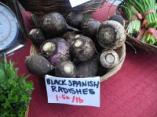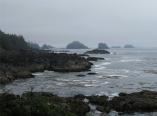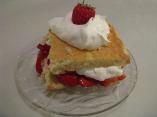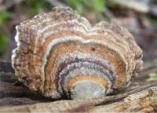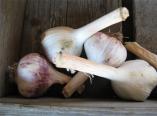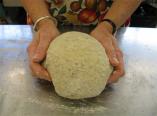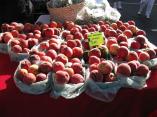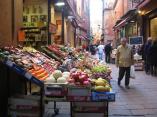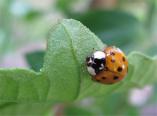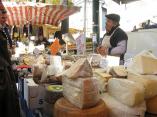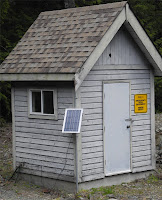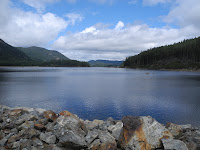Last week was National Drinking Water Week, and I celebrated by taking up a rare opportunity to go on a watershed tour – the Capital Regional District offers them only once each year – to see where my drinking water comes from.
The CRD has been pretty successful in getting people to reduce water waste, but Canada still has one of the highest water use rates in the world, second only to the USA. Nationally, we consume about 4,400 litres per capita per day. This figure includes industrial and agricultural use, of course, and we’re a big country with big irrigation systems in agribusiness, and a lot of manufacturing and processing, all of which uses water for such things as washing and cooling. In Canadian cities, the figure is 638 litres per day which includes personal consumption as well as water system leaks, firefighting and other municipal uses.
In 1994, Victoria’s consumption was 568 litres/day; in 2008 it was 400 (of which 280 was household use). Those figures come from two different sources so it depends on who you want to believe (and which way the wind is blowing?) when you start to compare. But the CRD has been doing a lot of work to inform its customers about water conservation, sponsoring irrigation workshops, native plant workshops (native plant gardens are best for conserving water because native plants are adapted to local soil and water conditions, and are more drought-tolerant than sissy imports); and offering this annual tour.
We were safely guided into the 20,549 ha (50,776 acre) watershed area by a CRD worker in an ambulance for just in case..
and after pausing to admire some local wildlife
stopped at Sooke Lake,
which is the reservoir for the CRD. Its capacity was increased a few years ago, and the drowned trees show the change of level. Even now we have the higher level, the CRD imposes routine watering restrictions from May through September, the times of peak use due to lawn and garden activity. This prevents us from draining the reservoir to a level where sediment and algae become a problem that would require additional water treatment; or the building of more expensive backup supplies.
After the flooding, the new shoreline was dug and replanted with trees, which would help with filtration and prevent erosion, but the digging disturbed the seeds from one of Vancouver Island’s top invasive plant species, broom, which out-competed the seedlings and took over. It’s a very hard plant to eradicate, and chemical solutions – even if they worked – are obviously not under consideration in this location.
Lots of wild strawberries around…
On we went, stopping at Rithets Creek
where there’s a weir, and a shed to measure water levels, which can get very high from spring runoff. Being up on a mountain, there’s no electricity for the equipment used, hence the solar panel.
We had a forest walk to look at some of the forestry issues that go into protecting a watershed. The whole area is surrounded by more and more development. Developers on Malahat Mountain (except for Elkington Forest) tend to clear-cut the trees and then sell lots that are promptly covered with impermeable surfaces like driveways and houses, not to mention lawns with their addiction to fertilizers and pesticides, all of which puts stress on drainage and the purity of the water supply.
Here’s a 4000 sph replanting which is 40 years old. SPH = stems per hectare; a forestry term that curiously prefers the word “stem” to what it really means (“tree”).
And our provincial tree, the Western red cedar
which our guide (a forester in his past life) said was probably not going to survive the drought caused by climate change. The douglas fir fares better in the wild swings of weather we have.
We lunched on top of the Sooke Dam, overlooking the lake
and then went for a look at Goldstream Dam
where watershed caretakers of yore used to live, and had to hike around the region to check on things.
All the water bodies had these debris booms to prevent floating matter from finding its way through the system.
Last stop was Japan Gulch (and they’re not sure where the name came from as there aren’t a lot of records kept there) where the water is treated, first with ultraviolet light, which kills parasites
and then with cholorine and ammonia, which create chloramine (mustard gas, in higher concentrations) that kills viruses and bacteria. All in all, we’re fortunate the water is very pure so doesn’t need much treatment.
And then it was time to leave. Sadly we did not get a turn trying on this natty emergency suit.
